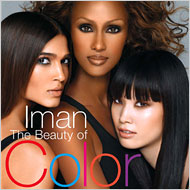
The New York Times offers an “of color” gift guide, for making the holidays special for that non-white person in your life. Now, I’m all for supporting the art and work of traditionally marginalized groups. And I’m all for including gift suggestions that aren’t centered on the experiences of white people. And if I were Latina, I would totally wear that last t-shirt!
But some of the descriptions are… hmm. For example:
We live in a multitextural world, especially when it comes to hair. Anthony Dickey is to women with “problem hair” what Batman is to Gotham City. With his out-of-the box approach, innovative products (including his new travel kits for kinky, wavy and curly hair), Mr. Dickey has been a hair hero to Michelle Obama, Kelis, Alicia Keys and others.
So, I’m white, but I also have wavy hair that tends to be dry and sort of difficult to manage, and I am quite partial to Mixed Chicks deep conditioner. So yay for a diversity of hair products for people whose hair is not straight! But… “problem hair”? Really? We’re still defining certain hair as problematic?
Also, the intro to the piece generally:
Somali fashion, do-it-yourself henna kits, children’s books that draw inspiration from the lives of Barack Obama and Sonia Sotomayor: it’s not hard to find gifts created for and by people of color this holiday season. Here are some possibilities.
Again, totally good with promoting the work of people of color, and for not centering whiteness in everything. But… why not just put this all in the general holiday shopping guide? Sure, “The Mocha Manual to Military Life: A Savvy Guide for Wives, Girlfriends and Female Service Members” isn’t going to appeal to every reader, but neither is the Bjorn Borg Men’s Underwear and Sock Set (which was in the “Chic and Cheerful” guide). Frédéric Fekkai Advanced Brilliant Glossing Products go in the “Cosmetic Enhancements” guide while “Hair Rules,” as I quoted above, is in the Of Color guide. All the other guides are divided up by interest — cosmetics, travel, food, etc. Except the Of Color guide.
Maybe I’m being silly, but would it have killed the Times to integrate the really beautiful designs by Mataano into their Chic and Stylish gift guide? Or put the Obama or Sotomayor children’s books on their Notable lists?
Of course, there is something to be said for highlighting the work of traditionally marginalized groups and for recognizing that they are traditionally excluded; I’m not trying to suggest that we all play the colorblind game. But I do think this could have been better executed.